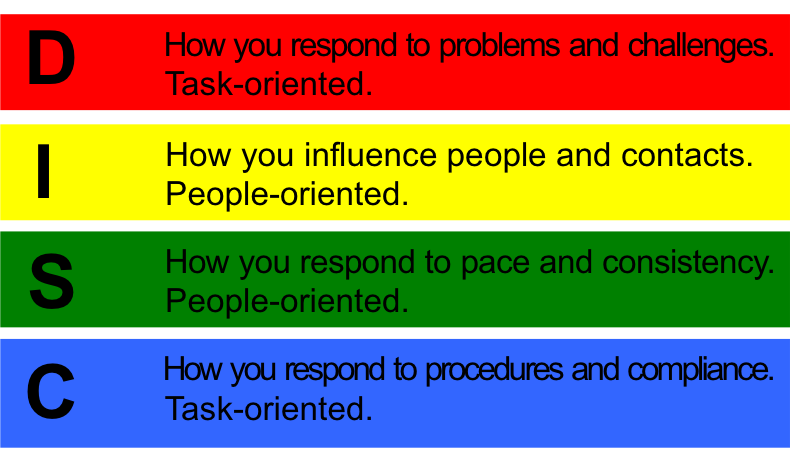Communication, miscommunication or the lack of communication, has a significant impact on the workplace with employee productivity and morale. Have you ever worked with someone who insists on taking up your morning with stories from their weekend? OR worked with someone who barely gets out a hello before requesting a report? We have all interacted with people of varying communication styles personally and professionally – it’s the ability to be aware of our own styles as well as theirs that makes us effective communicators.
The way in which each behavioral style prefers to give and receive information varies greatly. You can easily identify behavioral styles through the use of an assessment tool like the TriMetrix® HD and begin to better understand how to more effectively communicate with your team members. The Behaviors section of the TriMetrix® HD helps us understand how a person prefers to give and receive information.![]()
When you look at each of the characteristics, keep in mind that each one of these does not stand by itself. You will have a combination of behaviors, but you will likely have one dominate style.![]()
The four behaviors associated with the DISC or Behaviors section in the TriMetrix® HD:

Characteristics of a high ‘D’: Competitive, enjoys a challenge, problem solver, direct and to the point, takes charge.
- Do not ramble on or waste their time – Be brief, be bright, be gone!
- Stick to business. Do not chitchat.
- Do not come with the decision made.
- Disagree with the facts, not the person.
Characteristics of a high ‘I’: Strong need to interact with others, talkative – may have difficulty listening, positive sense of humor, may be disorganized, optimistic and enthusiastic.
- Allow time for relating and socializing. Do not be impersonal or task oriented.
- Put details in writing. Do not leave decisions undecided.
- Provide testimonials from people they see as important or prominent.
- Listen and let them talk but do not get lost in conversation.
Characteristics of a high ‘S’: Great listener, methodical and patient, will want to finish a project before starting another, has a need to serve others, needs preparation for proposed changes – does not like change for the sake of change.
- Start with personal comments – break the ice. Do not rush into business or the agenda.
- Listen and be responsive. Do not force a quick response.
- Do not be demanding or forceful. Slow down and allow time for them to decide.
- Build and maintain trust – do not promise something you cannot deliver.
Characteristics of a high ‘C’: Extremely organized, pays attention to detail, likes to have supporting evidence and may worry about the consequences caused by change.
- Prepare your case in advance. Do not be disorganized or messy.
- Provide facts and supporting information. Do not force a quick decision.
- Do what you say you can do. Do not fail to follow through.
- Allow them their space. Do not touch them.
To improve employee communication, we recommend that you:
- Profile your team members to create self-awareness.
- Take time as a team to learn and understand other's styles and make an effort to approach and engage your team members in a way they prefer.
- Have team members create a communication list of Do's and Don'ts.
If you have profiled your team members, they can choose their top three Do's and Don'ts that are provided in their Coaching report.
If you have not profiled your team, you can still create a Do’s and Don’ts list of Communication. Simply identify the top three ways you prefer and prefer NOT to be approached or interacted with.
Here are a few examples of what your Do’s and Don’ts might be:





